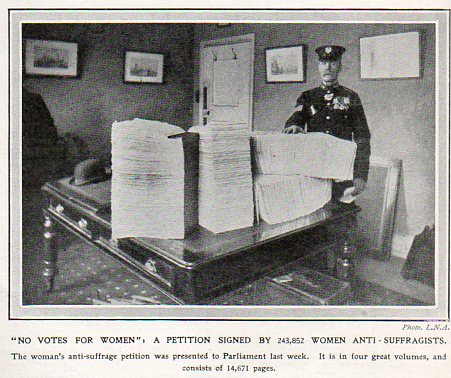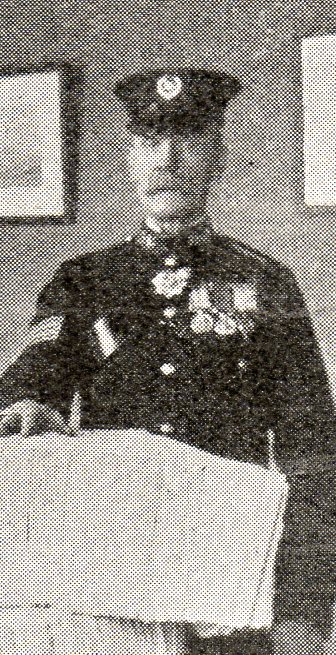JF Ptak Science Books (Rapid) Post
One in this blog's History of Women series
 By the time this photo of petitions against granting the voting to women in Great Britain appeared in The Illustrated London News in 1909, only six other places in the world had given women voting power: Pitcairn Islands (1838), Isle of Man (1881) , Cook Islands (1893), New Zealand (1893), Australia (1902) and Finland (1906). Admittedly, in the population of nations worldwide this was a very small percentage–smaller still if you considered the figure by population. The idea of universal suffrage was far from being popular, even only 101 years ago, within the lifetime of a few thousand people living today.
By the time this photo of petitions against granting the voting to women in Great Britain appeared in The Illustrated London News in 1909, only six other places in the world had given women voting power: Pitcairn Islands (1838), Isle of Man (1881) , Cook Islands (1893), New Zealand (1893), Australia (1902) and Finland (1906). Admittedly, in the population of nations worldwide this was a very small percentage–smaller still if you considered the figure by population. The idea of universal suffrage was far from being popular, even only 101 years ago, within the lifetime of a few thousand people living today.
There were no new additions between 1906 and 1913, but after that, from 1913 to 1920, 24 countries1 (including hundreds of millions of people this time) had granted the right, not the least of which was Great Britain (1918) and the United States (1920).
The complaints and arguments against women getting the vote have a recent ring to them: the vote for many threatened the home, undermined the scope of the family, would destroy the foundations of marriage, would take women away from their domestic duties, and in general would weaken the nation. It seems as though you could replace "votes for women" in this series of complaints with any number fof different issues today.
Notes:
Norway 1913
Denmark (Then including Iceland) 1915
Canada 1917
Russian Provisional Government 1917
German Austria 1918
Azerbaijan, Azerbaijan Democratic Republic 1918
Estonia 1918
Georgia (country) Democratic Republic of Georgia 1918
Germany 1918
Hungarian Democratic Republic 1918
Kyrgyz SSR 1918
Latvia 1918
Lithuania 1918
Poland 1918
United Kingdom 1918 and 1928
Belarus Belarusian People's Republic 1919
Belgium 1919/1948
Luxembourg 1919
Netherlands 1919
Sweden 1919
Ukrainian SSR 1919
Principality of Albania 1920
Czechoslovakia 1920
United States, 1920




Comments